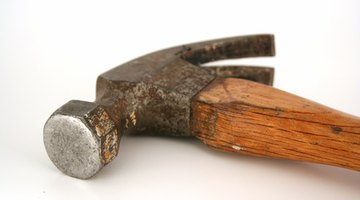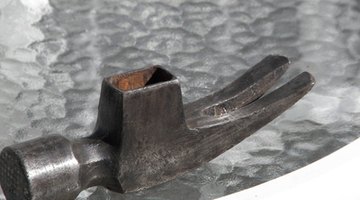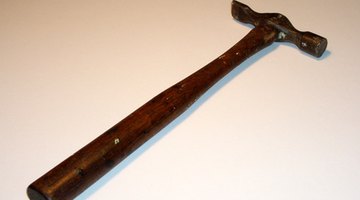How Are Hammers Manufactured?
Table of Contents
The hammer is the most basic and essential tool for a number of tasks inside the home and on the job. It is on every carpenter’s tool belt and in every homeowner’s toolbox. Hammers come in a variety of shapes, sizes, and materials including wood and metal.

People rarely give much thought to where hammers come from or how manufacturers make them.
History

The hammer is the earliest tool of mankind. The cave dwellers used rocks as the first prehistoric hammer to pound or break objects. Around the 4th Century B.C., people added the handle to the rock. Eventually, they made a hole in the stone to secure the handle. As civilizations made technological advances in metallurgy, these inventors added new metals to the wooden handle, beginning with the Bronze Age and progressing to our modern age of metal alloys.
The Head

In the manufacture of the modern hammer, the most important thing is achieving the correct amount of hardness in the head. This entails using high-carbon steel along with a process called heat-treating to achieve the correct level of hardness. If the head is too hard, it becomes brittle, if it is too soft the metal bends, making the head ineffective. The correct formation of the head is also the key to the hammer's overall balance. The better the balance, the easier the hammer is to use.
The Handle

The handle is also an important consideration in hammer manufacturing. The most desirable are the ones made of hickory since they are sturdy and cushion the hammer’s blows. The least desirable are those made of solid steel, because these vibrate a great deal and cause hand strain. Each type of material uses a specific process to create the handle. A lathe, used with a carving tool, spins and shapes the wood into a handle. For metal handles, manufacturers heat metal until it is malleable, and then mold it into the desired shape.
Wood Handle Assembly

For wood-handled hammers, the manufacturer inserts the wood into an eye, or hole, in the metal head. They then drive a wooden wedge through a pre-cut diagonal slot at the top of the handle, forcing the sides of the handle outward. This ensures a tight grip between the handle and head. Two metal wedges, driven in crosswise though the wooden wedge, secure it in place.
Metal Handle Assembly

Assemblers also attach metal handles through the eye of the head. The difference is they pour a liquid epoxy through the top of the hole to hold the handle in place. The final touch is a rubber grip designed for the bottom portion of the handle.
References
Writer Bio
Heather Mckinney has been writing for over 23 years. She has a published piece in the University Archives detailing the history of an independently owned student newspaper. Mckinney holds a Bachelor of Arts in history from University of Texas at San Antonio.
Photo Credits
- the hammer image by Jim Mills from Fotolia.com
- the hammer image by Jim Mills from Fotolia.com
- Stones image by fotografie-mey from Fotolia.com
- hammer head image by Joann Cooper from Fotolia.com
- hammer 2 image by chrisharvey from Fotolia.com
- hammer head image by Rich Johnson from Fotolia.com
- hammer image by JJAVA from Fotolia.com
More Articles



